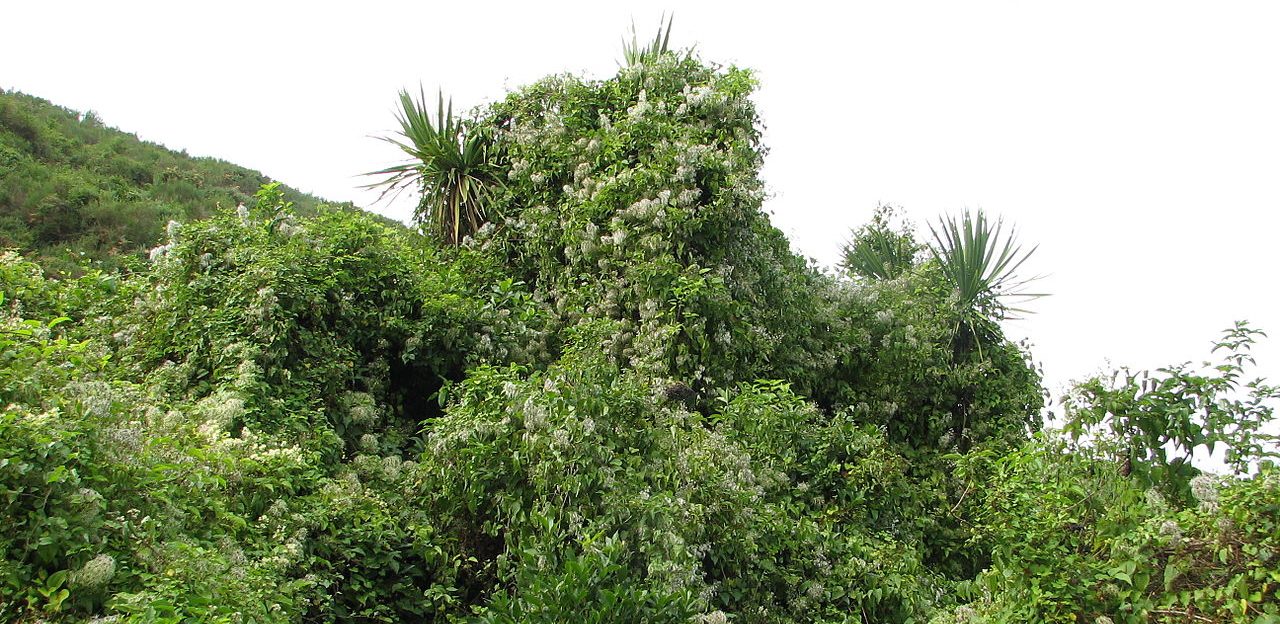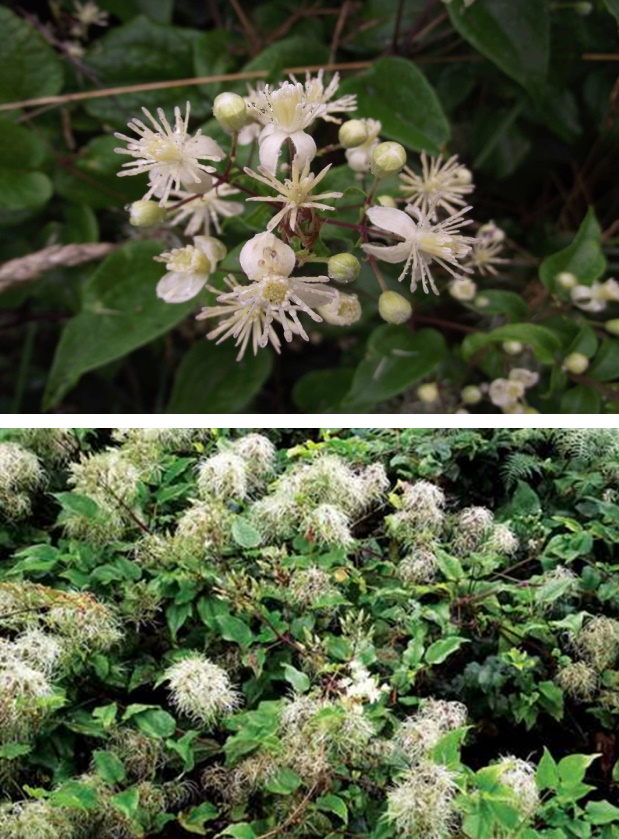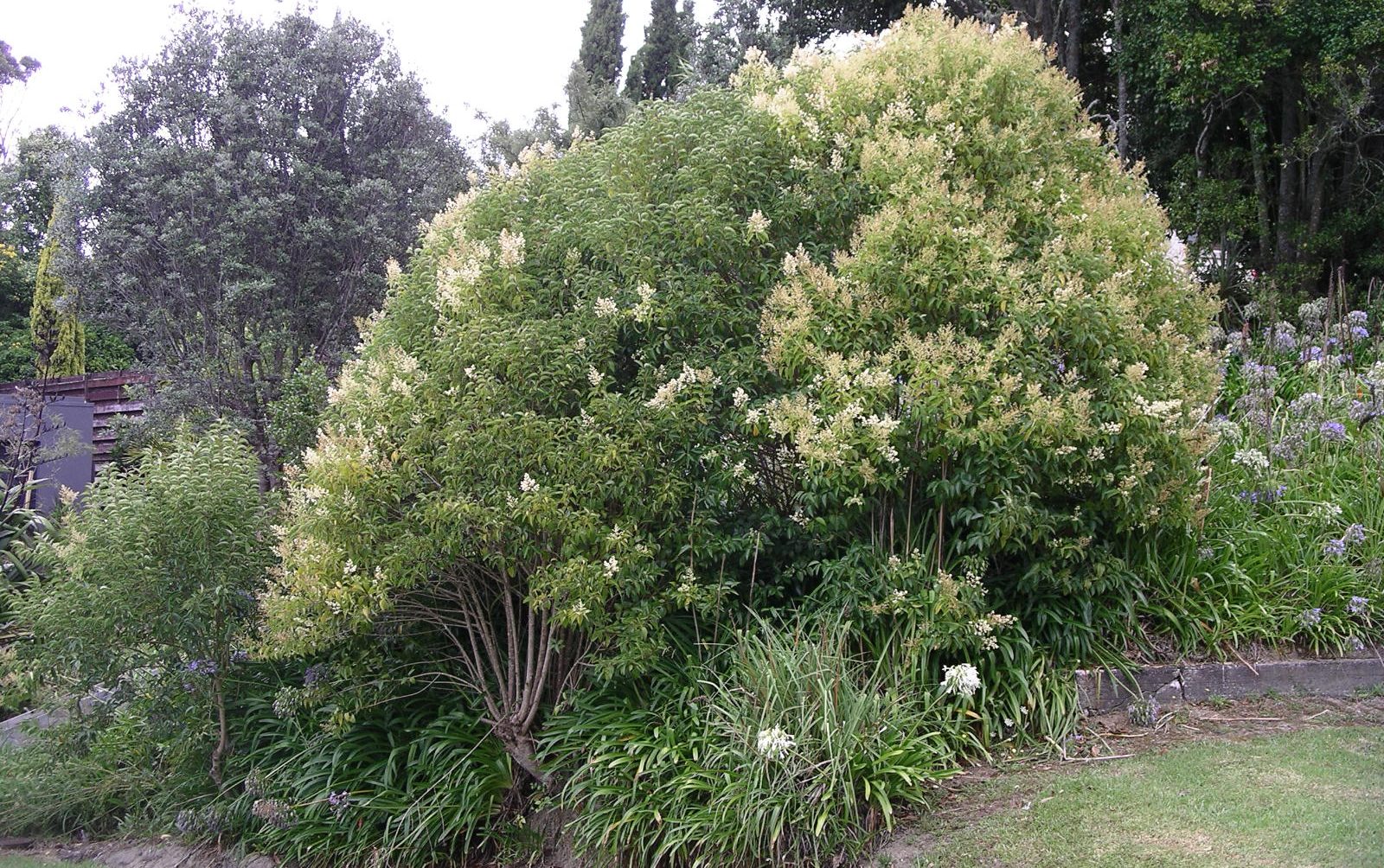Clipping the Beard: Removing Old Mans Beard from your Garden
Old man’s beard was originally introduced as a decorative plant, but quickly spread into our native bush, where it strangles our native plants and stops them from regenerating. Graham Bellamy explains how the Upper Hutt Branch is controlling this invasive weed.
In Upper Hutt, we have started a project to remove Old Man’s Beard from the area. We’re currently working in a number of areas, cutting and pasting plants throughout the Hutt Valley.
Old Man’s Beard is a wild clematis from Europe & South West Asia. Here in New Zealand, it has no natural enemies and grows quickly, forming a dense, heavy mass that dominates lowland forests as well as shrublands, riverbeds, cliffs, bush tracks, fernlands, and tussocklands.

Old man’s beard smothering a cabbage tree (Photo by Alan Liefting)
It’s particularly hard to get rid of since it’s tolerant of the cold, shade, damp, wind, salt and most soil types. It also produces lots of long-lived seeds.
Seeds are spread by water or wind, but when fragments of plants are removed from an area and disposed of, they can still regrow when hitting the ground.
This means you have to be very careful about removing it – and why you’ll often see Old Man Beard infestation on roadsides, hedgerows, vacant land and in willow swamps.
 What does Old Man’s Beard look like?
What does Old Man’s Beard look like?
It’s a deciduous, climbing layer vine that can grow up to 20 metres tall. Stems are long and woody with deeply-grooved, pale, easily peeled bark.
The leaves consist of 5 widely-spaced, thin, papery leaflets.
The flowers are creamy white and fragrant, about 2-3 centimetres in diameter. They
appear in December – May.
Seeds are grey and hairy with distinctive white plumes 3-4 cm long in dense fluffy clusters that persist over winter.
When seeds are present the plant is very easy to identify, especially when it is climbing over the forest canopy. The distinctive stems are also easy to identify below the canopy.
Controlling Old Man’s Beard
Cut the stems. It’s best to do this in two places – once at 1 metre above ground and again horizontally at ground-level so that you can see where you have been, and to prevent hanging vines from re-rooting.
Swab all cut stumps with weed killer. The easiest to use is a picloram gel, such as Vigilant. You can also use metsulfuron, such as Escort at 5 g/L, Tordon brush-killer at 10%, or Banvine at 20%. Some other options are Triumph Gel, Weed Weapon Invade Gel and Vigilant. For ground infestations, spray with glyphosphate (e.g. Roundup) at 2% or metsulfuron like Tordon Brush Killer or Versatill. Spraying is best done in spring when the plant is in full leaf but prior to flowering.
Remove seedlings. They can be pulled out all year round.
Dispose of cut segments. Do not leave cut stems to mulch or they may start growing again. Dispose of them by hanging in a nearby bush so they do not touch the ground, burning them, or disposing them at landfill.

